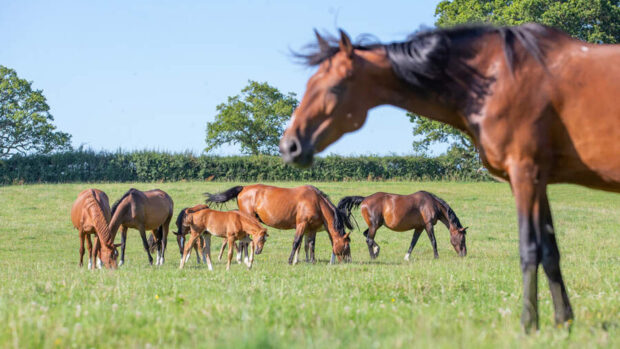For foals born this spring and summer, the next few weeks will most likely bring the biggest change in their lives so far as they are separated from their dams.
Weaning happens at a period of peak growth — a foal’s weight will increase by more than a fifth in the second six months of life and its height by about 10%. Most of this weight gain is in bone and muscle, and the foal requires the right ratios of energy, protein and minerals to achieve this development.
But the trauma of being separated from the mother can mean a knock-back in terms of feed consumed right at the time when nutrient supply is critical — typically, growth rates can drop by 60% in the first week post-weaning, and take a further two weeks to regain pre-weaning levels.
This drop can be mitigated to some degree if the foal has been used to eating some hard feed for at least a month prior to being separated. A foal can cope with small amounts of hard feed from as young as two to three weeks old.
In addition, the diet can change fundamentally from one based on milk and grass, together with a small amount of concentrate, to one of little grass, some hay and high levels of concentrate. This isn’t bad per se, as long as the nutrients previously supplied by grass and milk continue to come through hay and compound feed. It is managing this change smoothly that is important.
One reason for weaning early this season is the lack of grazing due to the summer drought conditions. Mares which were put back in-foal in May or June will soon be entering their second trimester of pregnancy, where a significant proportion of foetal development occurs — poor grazing and high demands from a nursing foal could affect the mare and developing foetus in this situation.
Feeding a weanling
- Most of the daily calories come from hard feed; make the forage as high quality as possible — stalky hay will make a pot-bellied foal
- Weaned foals eat a lot of hard feed pro rata: a Thoroughbred weanling will eat 2kg of hay and 4kg of a stud and/or young stock mix per day
- The stud and young stock mix should be high energy (12MJ/kg), have a protein content of 16%, with high concentrations of the principal amino acids, lysine and threonine
- Introduce the post-weaning stud/young stock diet at least one month before weaning
- Target calcium: phosphorus ratio: typically 1.8:1 and easily achievable if weaned on to a proprietary product, but a significant challenge in oat-fed weanlings. These will require supplementation
| This article was first published in Horse & Hound. Don’t miss this week’s Feed Forum (4 September issue), which focuses on avoiding bone disorders in growing young stock.
Click here to subscribe and enjoy Horse & Hound delivered to your door every week plus receive 19 issues absolutely free! |



